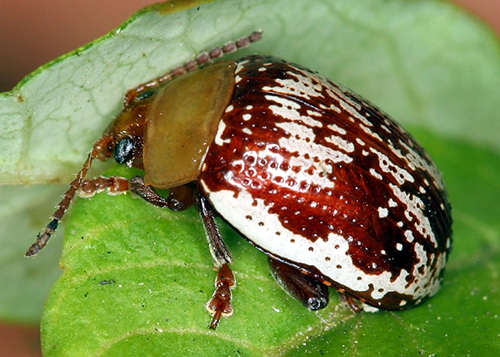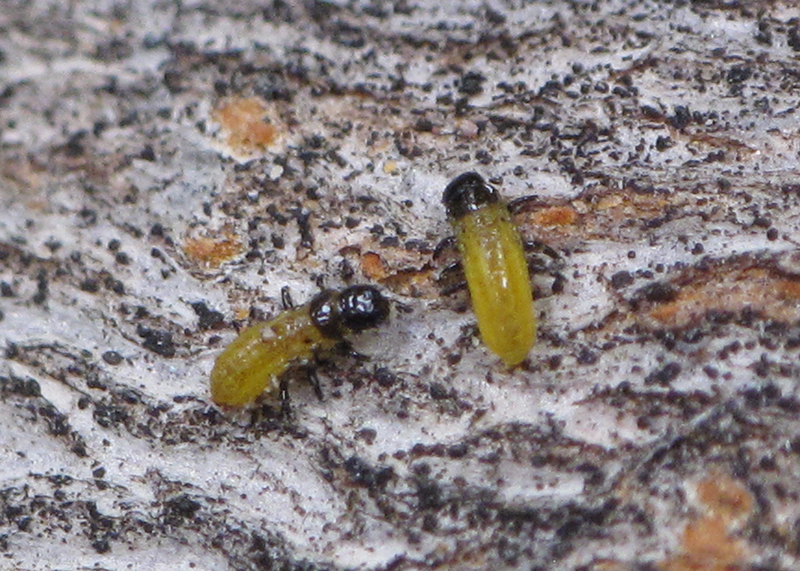Integrated Pest Management
Sumac Flea Beetle
Blepharida rhois
Pest Description
- adults: ~ 1/4 inch; cream colored with red markings on the wings; prothorax and head are orange
- wing coloration/pattern can be variable
- larvae: up to ~1/4 inch, yellow with pale stripes and black heads; larvae
- partially covered in fecal material
- eggs: laid in small groups and are covered with various colors of excrement
Host Plants, Diet & Damage
- skunkbush; smokebush
- feed on leaves, creating a ragged appearance
- larvae occasionally defoliate plants
- damage may be localized or over the whole tree
- repeated defoliation may cause plant death
Biology, Life Cycle & Damaging Life Stage
- overwinter as adults outdoors
- adults emerge in spring and feed on expanding foliage
- eggs are laid on branches in fecal egg cases
- larvae hatch and feed in groups on leaves
- larvae are typically present from mid-May to early-June
- larvae crawl down the tree and pupate in the soil
- new adults emerge in about 2 weeks and lay eggs
- after emerging, adults continue to feed until overwintering
- one generation per year
- larvae are the primary damaging life stage, but adults also cause damage
IPM Recommendations
- Manage trees to improve or maintain overall health.
- Pesticides are not typically needed for this pest.
- Monitor the leaves for larvae in mid- to late-May.
- Apply an insecticide (Bacillus thuringiensis var. tenebrionis; carbamate; pyrethroid) to branches and leaves just after egg hatch to control young larvae.




